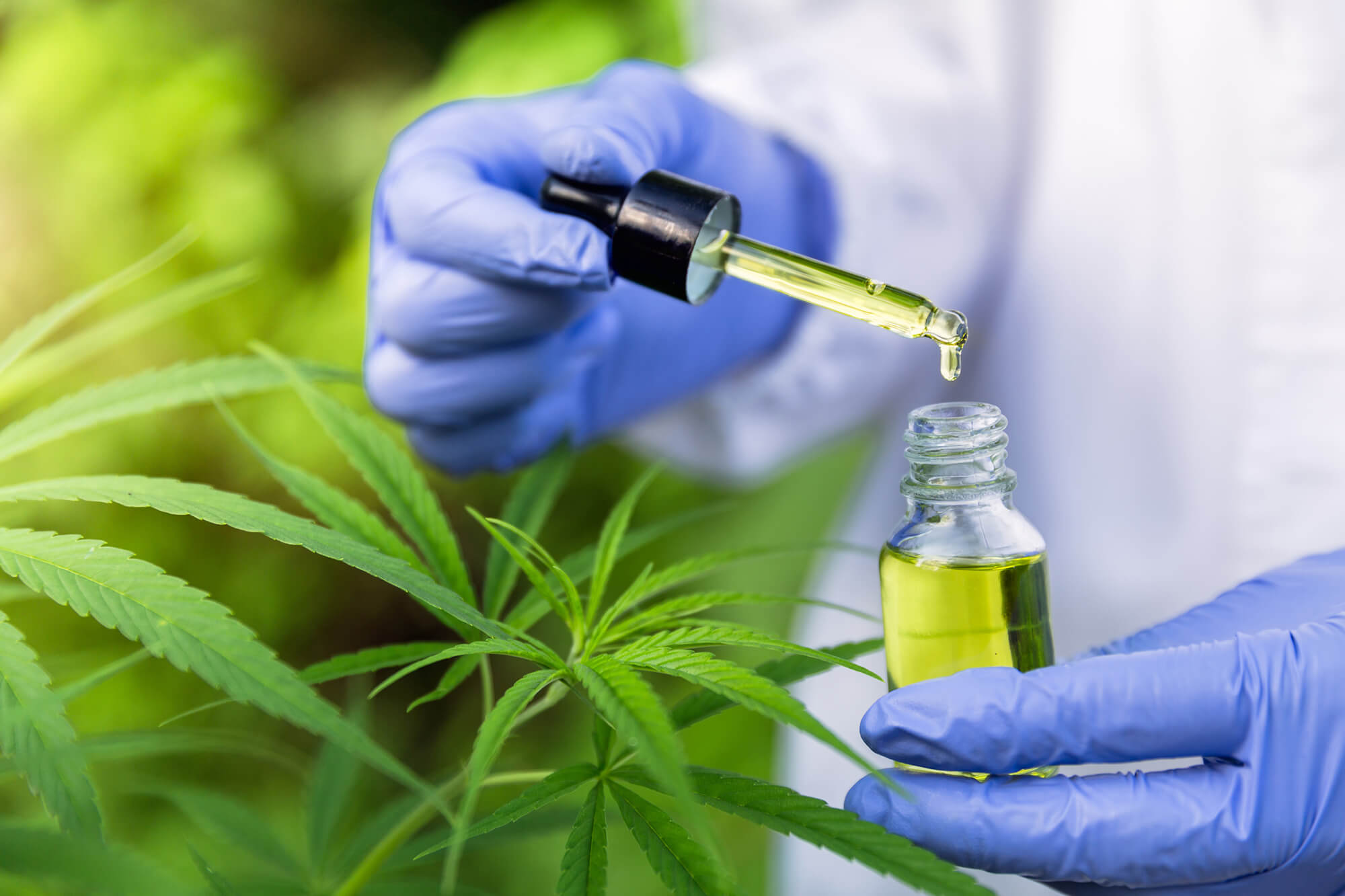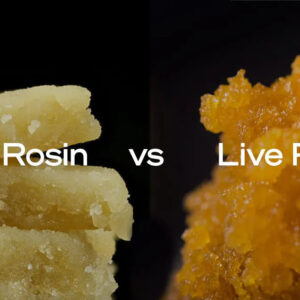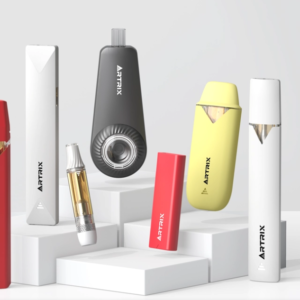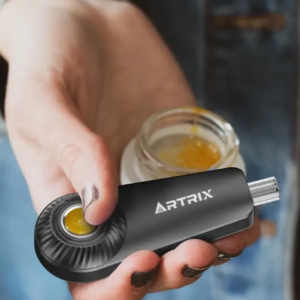Overview
This cancer information summary provides an overview of the use of Cannabis and its components as a treatment for people with cancer-related symptoms caused by the disease itself or its treatment.
This summary contains the following key information:
- Cannabishas been used for medicinal purposes for thousands of years.
- By federal law, the possession of Cannabisis illegal in the United States, except within approved research settings; however, a growing number of states, territories, and the District of Columbia have enacted laws to legalize its medical use.
- The U.S. Food and Drug Administration has not approved Cannabisas a treatment for cancer or any other medical condition.
- Chemicalcomponents of Cannabis, called cannabinoids, activate specific receptors throughout the body to produce pharmacologic effects, particularly in the central nervous system and the immune system.
- Commercially available cannabinoids, such as dronabinoland nabilone, are approved drugs for the treatment of cancer-related side effects.
- Cannabinoids may have benefits in the treatment of cancer-related side effects.
Many of the medical and scientific terms used in this summary are hypertext linked (at first use in each section) to the NCI Dictionary of Cancer Terms, which is oriented toward nonexperts. When a linked term is clicked, a definition will appear in a separate window.
Reference citations in some PDQ cancer information summaries may include links to external websites that are operated by individuals or organizations for the purpose of marketing or advocating the use of specific treatments or products. These reference citations are included for informational purposes only. Their inclusion should not be viewed as an endorsement of the content of the websites, or of any treatment or product, by the PDQ Integrative, Alternative, and Complementary Therapies Editorial Board or the National Cancer Institute.
General Information
Cannabis, also known as marijuana, originated in Central Asia but is grown worldwide today. In the United States, it is a controlled substance and is classified as a Schedule I agent (a drug with a high potential for abuse, and no currently accepted medical use). The Cannabis plant produces a resin containing 21-carbon terpenophenolic compounds called cannabinoids, in addition to other compounds found in plants, such as terpenes and flavonoids. The highest concentration of cannabinoids is found in the female flowers of the plant. Delta-9-tetrahydrocannabinol (THC) is the main psychoactive cannabinoid but over 100 other cannabinoids have been reported to be present in the plant. Cannabidiol (CBD) does not produce the characteristic altered consciousness associated with Cannabis but is felt to have potential therapeutic effectiveness and has recently been approved in the form of the pharmaceutical Epidiolex for the treatment of refractory seizure disorders in children. Other cannabinoids that are being investigated for potential medical benefits include cannabinol (CBN), cannabigerol (CBG), and tetrahydrocannabivarin (THCV), although data from human studies are currently unavailable.
Clinical trials conducted on medicinal Cannabis are limited. The U.S. Food and Drug Administration (FDA) has not approved the use of Cannabis as a treatment for any medical condition, although both isolated THC and CBD pharmaceuticals are licensed and approved. To conduct clinical drug research with botanical Cannabis in the United States, researchers must file an Investigational New Drug (IND) application with the FDA, obtain a Schedule I license from the U.S. Drug Enforcement Administration, and obtain approval from the National Institute on Drug Abuse.
In the 2018 United States Farm Bill, the term hemp is used to describe cultivars of the Cannabis species that contain less than 0.3% THC. Hemp oil or CBD oil are products manufactured from extracts of industrial hemp (i.e., low-THC cannabis cultivars), whereas hemp seed oil is an edible fatty oil that is essentially cannabinoid-free. Some products contain other botanical extracts and/or over-the-counter analgesics, and are readily available as oral and topical tinctures or other formulations often advertised for pain management and other purposes. Hemp products containing less than 0.3% of delta-9-THC are not scheduled drugs and could be considered as Farm Bill compliant. Hemp is not a controlled substance; however, CBD is a controlled substance.
The potential benefits of medicinal Cannabis for people living with cancer include the following:
- Antiemetic
- Appetite
- Pain relief.
- Improved sleep.
Although few relevant surveys of practice patterns exist, it appears that physicians caring for cancer patients in the United States who recommend medicinal Cannabis do so predominantly for symptom management. A growing number of pediatric patients are seeking symptom relief with Cannabis or cannabinoid treatment, although studies are limited. The American Academy of PediatricsExit Disclaimer has not endorsed Cannabis and cannabinoid use because of concerns about brain development.
This summary will review the role of Cannabis and the cannabinoids in the treatment of people with cancer and disease-related or treatment-related side effects.
History
Cannabis use for medicinal purposes dates back at least 3,000 years. It was introduced into Western medicine in 1839 by W.B. O’Shaughnessy, a surgeon who learned of its medicinal properties while working in India for the British East India Company. Its use was promoted for reported analgesic, sedative, anti-inflammatory, antispasmodic, and anticonvulsant effects.
In 1937, the U.S. Treasury Department introduced the Marihuana Tax Act. This Act imposed a levy of $1 per ounce for medicinal use of Cannabis and $100 per ounce for nonmedical use. Physicians in the United States were the principal opponents of the Act. The American Medical Association (AMA) opposed the Act because physicians were required to pay a special tax for prescribing Cannabis, use special order forms to procure it, and keep special records concerning its professional use. In addition, the AMA believed that objective evidence that Cannabis was harmful was lacking and that passage of the Act would impede further research into its medicinal worth. In 1942, Cannabis was removed from the U.S. Pharmacopoeia because of persistent concerns about its potential to cause harm. Recently, there has been renewed interest in Cannabis by the U.S. Pharmacopeia.
In 1951, Congress passed the Boggs Act, which for the first time included Cannabis with narcotic drugs. In 1970, with the passage of the Controlled Substances Act, marijuana was classified by Congress as a Schedule I drug. Drugs in Schedule I are distinguished as having no currently accepted medicinal use in the United States. Other Schedule I substances include heroin, LSD, mescaline, and methaqualone.
Despite its designation as having no medicinal use, Cannabis was distributed by the U.S. government to patients on a case-by-case basis under the Compassionate Use Investigational New Drug program established in 1978. Distribution of Cannabis through this program was closed to new patients in 1992. Although federal law prohibits the use of Cannabis.Additional states have legalized only one ingredient in Cannabis, such as cannabidiol (CBD), and are not included in the map. Some medical marijuana laws are broader than others, and there is state-to-state variation in the types of medical conditions for which treatment is allowed.
Antitumor Effects
One study in mice and rats suggested that cannabinoids may have a protective effect against the development of certain types of tumors. During this 2-year study, groups of mice and rats were given various doses of THC by gavage. A dose-related decrease in the incidence of hepatic adenoma tumors and hepatocellular carcinoma (HCC) was observed in the mice. Decreased incidences of benign tumors (polyps and adenomas) in other organs (mammary gland, uterus, pituitary, testis, and pancreas) were also noted in the rats. In another study, delta-9-THC, delta-8-THC, and cannabinol were found to inhibit the growth of Lewis lung adenocarcinoma cells in vitro and in vivo. In addition, other tumors have been shown to be sensitive to cannabinoid-induced growth inhibition.
Cannabinoids may cause antitumor effects by various mechanisms, including induction of cell death, inhibition of cell growth, and inhibition of tumor angiogenesis invasion and metastasis. Two reviews summarize the molecular mechanisms of action of cannabinoids as antitumor agents. Cannabinoids appear to kill tumor cells but do not affect their nontransformed counterparts and may even protect them from cell death. For example, these compounds have been shown to induce apoptosis in glioma cells in culture and induce regression of glioma tumors in mice and rats, while they protect normal glial cells of astroglial and oligodendroglial lineages from apoptosis mediated by the CB1 receptor.
The effects of delta-9-THC and a synthetic agonist of the CB2 receptor were investigated in HCC. Both agents reduced the viability of HCC cells in vitro and demonstrated antitumor effects in HCC subcutaneous xenografts in nude mice. The investigations documented that the anti-HCC effects are mediated by way of the CB2 receptor. Similar to findings in glioma cells, the cannabinoids were shown to trigger cell death through stimulation of an endoplasmic reticulum stress pathway that activates autophagy and promotes apoptosis. Other investigations have confirmed that CB1 and CB2 receptors may be potential targets in non-small cell lung carcinoma and breast cancer.
An in vitro study of the effect of CBD on programmed cell death in breast cancer cell lines found that CBD induced programmed cell death, independent of the CB1, CB2, or vanilloid receptors. CBD inhibited the survival of both estrogen receptor–positive and estrogen receptor–negative breast cancer cell lines, inducing apoptosis in a concentration-dependent manner while having little effect on nontumorigenic mammary cells. Other studies have also shown the antitumor effect of cannabinoids (i.e., CBD and THC) in preclinical models of breast cancer.
CBD has also been demonstrated to exert a chemopreventive effect in a mouse model of colon cancer. In this experimental system, azoxymethane increased premalignant and malignant lesions in the mouse colon. Animals treated with azoxymethane and CBD concurrently were protected from developing premalignant and malignant lesions. In in vitro experiments involving colorectal cancer cell lines, the investigators found that CBD protected DNA from oxidative damage, increased endocannabinoid levels, and reduced cell proliferation. In a subsequent study, the investigators found that the antiproliferative effect of CBD was counteracted by selective CB1 but not CB2 receptor antagonists, suggesting an involvement of CB1 receptors.
Another investigation into the antitumor effects of CBD examined the role of intercellular adhesion molecule-1 (ICAM-1). ICAM-1 expression in tumor cells has been reported to be negatively correlated with cancer metastasis. In lung cancer cell lines, CBD upregulated ICAM-1, leading to decreased cancer cell invasiveness.
In an in vivo model using severe combined immunodeficient mice, subcutaneous tumors were generated by inoculating the animals with cells from human non-small cell lung carcinoma cell lines. Tumor growth was inhibited by 60% in THC-treated mice compared with vehicle-treated control mice. Tumor specimens revealed that THC had antiangiogenic and antiproliferative effects. However, research with immunocompetent murine tumor models has demonstrated immunosuppression and enhanced tumor growth in mice treated with THC.
In addition, both plant-derived and endogenous cannabinoids have been studied for anti-inflammatory effects. A mouse study demonstrated that endogenous cannabinoid system signaling is likely to provide intrinsic protection against colonic inflammation. As a result, a hypothesis that phytocannabinoids and endocannabinoids may be useful in the risk reduction and treatment of colorectal cancer has been developed.
CBD may also enhance uptake of cytotoxic drugs into malignant cells. Activation of transient receptor potential vanilloid type 2 (TRPV2) has been shown to inhibit proliferation of human glioblastoma multiforme cells and overcome resistance to the chemotherapy agent carmustine.One study showed that coadministration of THC and CBD over single-agent usage had greater antiproliferative activity in an in vitro study with multiple human glioblastoma multiforme cell lines. In an in vitro model, CBD increased TRPV2 activation and increased uptake of cytotoxic drugs, leading to apoptosis of glioma cells without affecting normal human astrocytes. This suggests that coadministration of CBD with cytotoxic agents may increase drug uptake and potentiate cell death in human glioma cells. Also, CBD together with THC may enhance the antitumor activity of classic chemotherapeutic drugs such as temozolomide in some mouse models of cancer. A meta-analysis of 34 in vitro and in vivo studies of cannabinoids in glioma reported that all but one study confirmed that cannabinoids selectively kill tumor cells.
Antiemetic Effects
Preclinical research suggests that emetic circuitry is tonically controlled by endocannabinoids. The antiemetic action of cannabinoids is believed to be mediated via interaction with the 5-hydroxytryptamine 3 (5-HT3) receptor. CB1 receptors and 5-HT3 receptors are colocalized on gamma-aminobutyric acid (GABA)-ergic neurons, where they have opposite effects on GABA release. There also may be direct inhibition of 5-HT3 gated ion currents through non–CB1 receptor pathways. CB1 receptor antagonists have been shown to elicit emesis in the least shrew that is reversed by cannabinoid agonists. The involvement of CB1 receptor in emesis prevention has been shown by the ability of CB1 antagonists to reverse the effects of THC and other synthetic cannabinoid CB1 agonists in suppressing vomiting caused by cisplatin in the house musk shrew and lithium chloride in the least shrew. In the latter model, CBD was also shown to be efficacious.
Appetite Stimulation
Many animal studies have previously demonstrated that delta-9-THC and other cannabinoids have a stimulatory effect on appetite and increase food intake. It is believed that the endogenous cannabinoid system may serve as a regulator of feeding behavior. The endogenous cannabinoid anandamide potently enhances appetite in mice. Moreover, CB1 receptors in the hypothalamus may be involved in the motivational or reward aspects of eating.
Analgesia
Understanding the mechanism of cannabinoid-induced analgesia has been increased through the study of cannabinoid receptors, endocannabinoids, and synthetic agonists and antagonists. Cannabinoids produce analgesia through supraspinal, spinal, and peripheral modes of action, acting on both ascending and descending pain pathways. The CB1 receptor is found in both the central nervous system (CNS) and in peripheral nerve terminals. Similar to opioid receptors, increased levels of the CB1 receptor are found in regions of the brain that regulate nociceptive processing. CB2 receptors, located predominantly in peripheral tissue, exist at very low levels in the CNS. With the development of receptor-specific antagonists, additional information about the roles of the receptors and endogenous cannabinoids in the modulation of pain has been obtained.
Cannabinoids may also contribute to pain modulation through an anti-inflammatory mechanism; a CB2 effect with cannabinoids acting on mast cell receptors to attenuate the release of inflammatory agents, such as histamine and serotonin, and on keratinocytes to enhance the release of analgesic opioids has been described. One study reported that the efficacy of synthetic CB1- and CB2-receptor agonists were comparable with the efficacy of morphine in a murine model of tumor pain.
Cannabinoids have been shown to prevent chemotherapy-induced neuropathy in animal models exposed to paclitaxel, vincristine, or cisplatin.
Anxiety and Sleep
The endocannabinoid system is believed to be centrally involved in the regulation of mood and the extinction of aversive memories. Animal studies have shown CBD to have anxiolytic properties. It was shown in rats that these anxiolytic properties are mediated through unknown mechanisms. Anxiolytic effects of CBD have been shown in several animal models.
Cannabis Pharmacology
When oral Cannabis is ingested, there is a low (6%–20%) and variable oral bioavailability. Peak plasma concentrations of delta-9-tetrahydrocannabinol (THC) occur after 1 to 6 hours and remain elevated with a terminal half-life of 20 to 30 hours. Taken by mouth, delta-9-THC is initially metabolized in the liver to 11-OH-THC, a potent psychoactive metabolite. Inhaled cannabinoids are rapidly absorbed into the bloodstream with a peak concentration in 2 to 10 minutes, declining rapidly for a period of 30 minutes and with less generation of the psychoactive 11-OH metabolite.
Cannabinoids are known to interact with the hepatic cytochrome P450 enzyme system. In one study, 24 cancer patients were treated with intravenous irinotecan (600 mg, n = 12) or docetaxel (180 mg, n = 12), followed 3 weeks later by the same drugs concomitant with medicinal Cannabis taken in the form of an herbal tea for 15 consecutive days, starting 12 days before the second treatment. The administration of Cannabis did not significantly influence exposure to and clearance of irinotecan or docetaxel, although the herbal tea route of administration may not reproduce the effects of inhalation or oral ingestion of fat-soluble cannabinoids.
Highly concentrated THC or cannabidiol (CBD) oil extracts are being illegally promoted as potential cancer cures. These oils have not been evaluated in any clinical trials for anticancer activity or safety. Because CBD is a potential inhibitor of certain cytochrome P450 enzymes, highly concentrated CBD oils used concurrently with conventional therapies that are metabolized by these enzymes could potentially increase toxicity or decrease the effectiveness of these therapies.
Cancer Risk
A number of studies have yielded conflicting evidence regarding the risks of various cancers associated with Cannabis smoking.
A pooled analysis of three case-cohort studies of men in northwestern Africa (430 cases and 778 controls) showed a significantly increased risk of lung cancer among tobacco smokers who also inhaled Cannabis.
A large, retrospective cohort study of 64,855 men aged 15 to 49 years from the United States found that Cannabis use was not associated with tobacco-related cancers and a number of other common malignancies. However, the study did find that, among nonsmokers of tobacco, ever having used Cannabis was associated with an increased risk of prostate cancer.
A population-based case-control study of 611 lung cancer patients revealed that chronic low Cannabis exposure was not associated with an increased risk of lung cancer or other upper aerodigestive tract cancers and found no positive associations with any cancer type (oral, pharyngeal, laryngeal, lung, or esophageal) when adjusting for several confounders, including cigarette smoking.
A systematic review assessing 19 studies that evaluated premalignant or malignant lung lesions in persons 18 years or older who inhaled Cannabis concluded that observational studies failed to demonstrate statistically significant associations between Cannabis inhalation and lung cancer after adjusting for tobacco use. In the review of the published meta-analyses, the National Academies of Sciences, Engineering, and Medicine (NASEM) report concluded that there was moderate evidence of no statistical association between Cannabis smoking and the incidence of lung cancer.
Epidemiologic studies examining one association of Cannabis use with head and neck squamous cell carcinomas have also been inconsistent in their findings. A pooled analysis of nine case-control studies from the U.S./Latin American International Head and Neck Cancer Epidemiology (INHANCE) Consortium included information from 1,921 oropharyngeal cases, 356 tongue cases, and 7,639 controls. Compared with those who never smoked Cannabis, Cannabis smokers had an elevated risk of oropharyngeal cancers and a reduced risk of tongue cancer. These study results both reflect the inconsistent effects of cannabinoids on cancer incidence noted in previous studies and suggest that more work needs to be done to understand the potential role of human papillomavirus infection. A systematic review and meta-analysis of nine case-control studies involving 13,931 participants also concluded that there was insufficient evidence to support or refute a positive or negative association between Cannabis smoking and the incidence of head and neck cancers.
With a hypothesis that chronic marijuana use produces adverse effects on the human endocrine and reproductive systems, the association between Cannabis use and incidence of testicular germ cell tumors (TGCTs) has been examined. Three population-based case-control studies reported an association between Cannabis use and elevated risk of TGCTs, especially nonseminoma or mixed-histology tumors. However, the sample sizes in these studies were inadequate to address Cannabis dose by addressing associations with respect to recency, frequency, and duration of use. In a study of 49,343 Swedish men aged 19 to 21 years enrolled in the military between 1969 and 1970, participants were asked once at the time of conscription about their use of Cannabis and were followed up for 42 years. This study found no evidence of a significant relation between “ever” Cannabis use and the development of testicular cancer, but did find that “heavy” Cannabis use (more than 50 times in a lifetime) was associated with a 2.5-fold increased risk. Limitations of the study were that it relied on indirect assessment of Cannabis use; and no information was collected on Cannabis use after the conscription-assessment period or on whether the testicular cancers were seminoma or nonseminoma subtypes. These reports established the need for larger, well-powered, prospective studies, especially studies evaluating the role of endocannabinoid signaling and cannabinoid receptors in TGCTs.
An analysis of 84,170 participants in the California Men’s Health Study was performed to investigate the association between Cannabis use and the incidence of bladder cancer. During 16 years of follow-up, 89 Cannabis users (0.3%) developed bladder cancer compared with 190 (0.4%) of the men who did not report Cannabis use (P < .001). After adjusting for age, race, ethnicity, and body mass index, Cannabis use was associated with a 45% reduction in bladder cancer incidence (hazard ratio, 0.55; 95% confidence interval (CI), 0.33–1.00).
A comprehensive Health Canada monograph on marijuana concluded that while there are many cellular and molecular studies that provide strong evidence that inhaled marijuana is carcinogenic, the epidemiologic evidence of a link between marijuana use and cancer is still inconclusive.
Cancer Treatment
No ongoing clinical trials of Cannabis as a treatment for cancer in humans were identified in a PubMed search. The only published trial of any cannabinoid in patients with cancer is a small pilot study of intratumoral injection of delta-9-THC in patients with recurrent glioblastoma multiforme, which demonstrated no significant clinical benefit. In a trial (NCT02255292) conducted in Israel, oral CBD was investigated as a single salvage agent for recurrent solid tumors. The study was projected to be completed in 2015; however, no results have been published. A small exploratory phase IB study was conducted in the United Kingdom that used nabiximols, a 1:1 ratio of THC:CBD in a Cannabis-based medicinal extract oromucosal spray, in conjunction with dose-dense temozolomide in treating patients with recurrent glioblastoma multiforme. Of the 27 patients enrolled, 6 were part of an open-label group and 21 were part of a randomized group (12 treated with nabiximols and 9 treated with placebo). Progression-free survival at 6 months was seen in 33% of patients in both arms of the study. However, 83.3% of the patients who received nabiximols were alive at 1 year compared with 44.4% of the patients who recieved placebo (P = .042). The investigators cautioned that this early-phase study was not powered for a survival endpoint. Overall survival rates at 2 years continued to favor the nabiximols arm (50%) compared with the placebo arm (22%) (these rates included results for the 6 patients in the open-label group who received nabiximols).
In a 2016 consecutive case series study, nine patients with varying stages of brain tumors, including six with glioblastoma multiforme, received CBD 200 mg twice daily in addition to surgical excision and chemoradiation. The authors reported that all but one of the cohort remained alive at the time of publication. However, the heterogeneity of the brain tumor patients probably contributed to the findings.
Another Israeli group postulated that the anti-inflammatory and immunosuppressive effects of CBD might make it a valuable adjunct in the treatment of acute graft-versus-host disease (GVHD) in patients who have undergone allogeneic hematopoietic stem cell transplantation. The authors investigated CBD 300 mg/d in addition to standard GVHD prophylaxis in 48 adult patients who had undergone transplantation predominantly for acute leukemia or myelodysplastic syndrome (NCT01385124 and NCT01596075). The combination of CBD with standard GVHD prophylaxis was found to be safe. Compared with 101 historical controls treated with standard prophylaxis, patients who received CBD appeared to have a lower incidence of grade II to grade IV GVHD, suggesting that a randomized controlled trial (RCT) is warranted.
Clinical data regarding Cannabis as an anticancer agent in pediatric use is limited to a few case reports.
Antiemetic Effect
Cannabinoids
Despite advances in pharmacologic and nonpharmacologic management, nausea and vomiting (N/V) remain distressing side effects for cancer patients and their families. Dronabinol, a synthetically produced delta-9-THC, was approved in the United States in 1986 as an antiemetic to be used in cancer chemotherapy. Nabilone, a synthetic derivative of delta-9-THC, was first approved in Canada in 1982 and is now also available in the United States. Both dronabinol and nabilone have been approved by the U.S. Food and Drug Administration (FDA) for the treatment of N/V associated with cancer chemotherapy in patients who have failed to respond to conventional antiemetic therapy. Numerous clinical trials and meta-analyses have shown that dronabinol and nabilone are effective in the treatment of N/V induced by chemotherapy. The National Comprehensive Cancer Network Guidelines recommend cannabinoids as breakthrough treatment for chemotherapy-related N/V. The American Society for Clinical Oncology (ASCO) antiemetic guidelines updated in 2017 recommends that the FDA-approved cannabinoids, dronabinol or nabilone, be used to treat N/V that is resistant to standard antiemetic therapies.
One systematic review studied 30 randomized comparisons of delta-9-THC preparations with placebo or other antiemetics from which data on efficacy and harm were available. Oral nabilone, oral dronabinol, and intramuscular levonantradol (a synthetic analog of dronabinol) were tested. Inhaled Cannabis trials were not included. Among all 1,366 patients included in the review, cannabinoids were found to be more effective than the conventional antiemetics prochlorperazine, metoclopramide, chlorpromazine, thiethylperazine, haloperidol, domperidone, and alizapride. Cannabinoids, however, were not more effective for patients receiving very low or very high emetogenic chemotherapy. Side effects included a feeling of being high, euphoria, sedation or drowsiness, dizziness, dysphoria or depression, hallucinations, paranoia, and hypotension.
Another analysis of 15 controlled studies compared nabilone with placebo or available antiemetic drugs. Among 600 cancer patients, nabilone was found to be superior to prochlorperazine, domperidone, and alizapride, with nabilone favored for continuous use.
A Cochrane meta-analysis of 23 RCTs reviewed studies conducted between 1975 and 1991 that investigated dronabinol or nabilone, either as monotherapy or as an adjunct to the conventional dopamine antagonists that were the standard antiemetics at that time. The chemotherapy regimens involved drugs with low, moderate, or high emetic potential. The meta-analysis graded the quality of evidence as low for most outcomes. The review concluded that individuals were more likely to report complete absence of N/V when they received cannabinoids compared with placebo, although they were more likely to withdraw from the study because of an adverse event. Individuals reported a higher preference for cannabinoids than placebo or prochlorperazine. There was no difference in the antiemetic effect of cannabinoids when compared with prochlorperazine. The authors concluded that Cannabis-based medications may be useful for treating refractory chemotherapy-induced N/V; however, they cautioned that their assessment may change with the availability of newer antiemetic regimens.
At least 50% of patients who receive moderately emetogenic chemotherapy may experience delayed chemotherapy-induced N/V. Although selective neurokinin 1 antagonists that inhibit substance P have been approved for delayed N/V, a study was conducted before their availability to assess dronabinol, ondansetron, or their combination in preventing delayed-onset chemotherapy-induced N/V. Ondansetron, a serotonin 5-hydroxytryptamine 3 (5-HT3) receptor antagonist, is one of the mainstay agents in the current antiemetic armamentarium. In this trial, the primary objective was to assess the response 2 to 5 days after moderately to severely emetogenic chemotherapy. Sixty-one patients were analyzed for efficacy. The total response—a composite endpoint—including nausea intensity, vomiting/retching, and use of rescue medications, was similar with dronabinol (54%), ondansetron (58%), and combination therapy (47%) when compared with placebo (20%). Nausea absence was greater in the active treatment groups (dronabinol 71%, ondansetron 64%, combination therapy 53%) when compared with placebo (15%; P < .05 vs. placebo for all). Occurrence rates for nausea intensity and vomiting/retching episodes were the lowest in patients treated with dronabinol, suggesting that dronabinol compares favorably with ondansetron in this situation where a substance P inhibitor would currently be the drug of choice.
(Refer to the Cannabis section in the PDQ summary on Nausea and Vomiting Related to Cancer Treatment for more information.)
Cannabis
Three trials have evaluated the efficacy of inhaled Cannabis in chemotherapy-induced N/V. In two of the studies, inhaled Cannabis was made available only after dronabinol failure. In the first trial, no antiemetic effect was achieved with marijuana in patients receiving cyclophosphamide or doxorubicin, but in the second trial, a statistically significant superior antiemetic effect of inhaled Cannabis versus placebo was found among patients receiving high-dose methotrexate. The third trial was a randomized, double-blind, placebo-controlled, crossover trial involving 20 adults in which both inhaled marijuana and oral THC were evaluated. One-quarter of the patients reported a favorable antiemetic response to the cannabinoid therapies. This latter study was reported in abstract form in 1984. A full report, detailing the methods and outcomes apparently has not been published, which limits a thorough interpretation of the significance of these findings.
Newer antiemetics (e.g., 5-HT3 receptor antagonists) have not been directly compared with Cannabis or cannabinoids in cancer patients. However, the Cannabis-extract oromucosal spray, nabiximols, formulated with 1:1 THC:CBD was shown in a small pilot randomized, placebo-controlled, double-blinded clinical trial in Spain to treat chemotherapy-related N/V.
ASCO antiemetic guidelines updated in 2017 state that evidence remains insufficient to recommend medical marijuana for either the prevention or treatment of N/V in patients with cancer who receive chemotherapy or radiation therapy.
Appetite Stimulation
Anorexia, early satiety, weight loss, and cachexia are problems experienced by cancer patients. Such patients are faced not only with the disfigurement associated with wasting but also with an inability to engage in the social interaction of meals.
Cannabinoids
Four controlled trials have assessed the effect of oral THC on measures of appetite, food appreciation, calorie intake, and weight loss in patients with advanced malignancies. Three relatively small, placebo-controlled trials (N = 52; N = 46; N = 65) each found that oral THC produced improvements in one or more of these outcomes. The one study that used an active control evaluated the efficacy of dronabinol alone or with megestrol acetate compared with that of megestrol acetate alone for managing cancer-associated anorexia. In this randomized, double-blind study of 469 adults with advanced cancer and weight loss, patients received 2.5 mg of oral THC twice daily, 800 mg of oral megestrol daily, or both. Appetite increased by 75% in the megestrol group and weight increased by 11%, compared with a 49% increase in appetite and a 3% increase in weight in the oral THC group after 8 to 11 weeks of treatment. The between-group differences were statistically significant in favor of megestrol acetate. Furthermore, the combined therapy did not offer additional benefits beyond those provided by megestrol acetate alone. The authors concluded that dronabinol did little to promote appetite or weight gain in advanced cancer patients compared with megestrol acetate.
Cannabis
In trials conducted in the 1980s that involved healthy control subjects, inhaling Cannabis led to an increase in caloric intake, mainly in the form of between-meal snacks, with increased intakes of fatty and sweet foods.
Despite patients’ great interest in oral preparations of Cannabis to improve appetite, there is only one trial of Cannabis extract used for appetite stimulation. In an RCT, researchers compared the safety and effectiveness of orally administered Cannabis extract (2.5 mg THC and 1 mg CBD), THC (2.5 mg), or placebo for the treatment of cancer-related anorexia-cachexia in 243 patients with advanced cancer who received treatment twice daily for 6 weeks. Results demonstrated that although these agents were well tolerated by these patients, no differences were observed in patient appetite or quality of life among the three groups at this dose level and duration of intervention.
No published studies have explored the effect of inhaled Cannabis on appetite in cancer patients.





